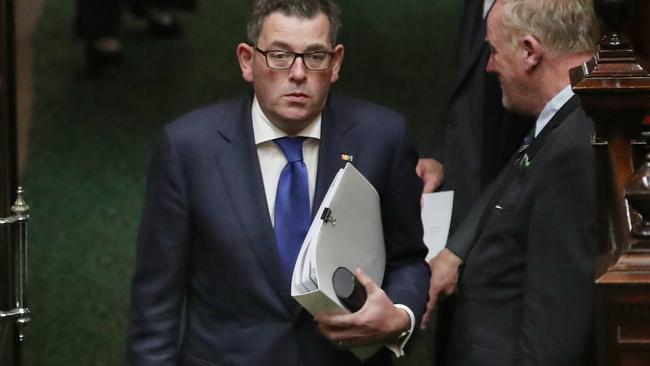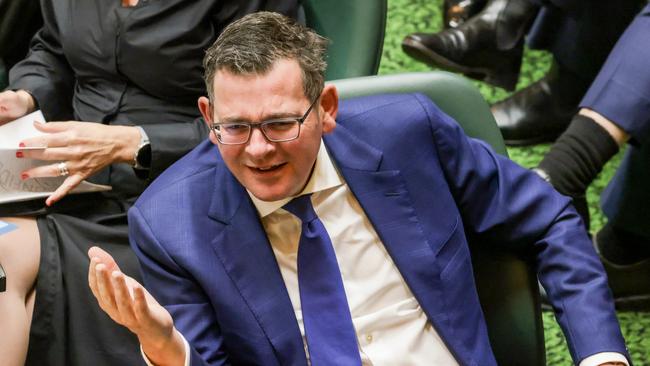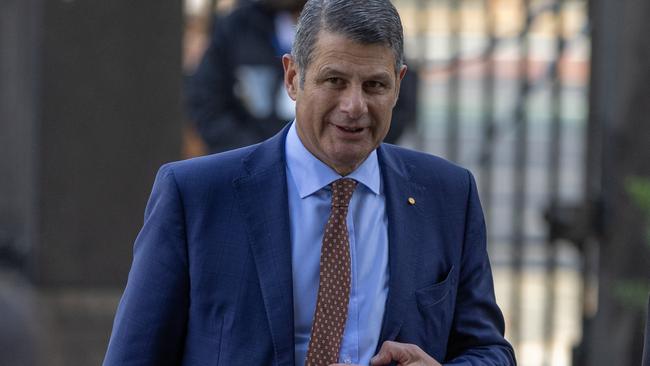
And the problems are not easy to solve because the Opposition acts as though it does not want the responsibility of government in such a difficult time. In any event, the next state election is not scheduled until November 2026.
In the interim, the state will require the rating agencies and the media to be much more aware of what is really happening, which is not easy because Daniel Andrews is probably the best political marketer in the country.
But despite his marketing, an already unsustainable debt just keeps rising, and it will not stop until the underlying problems are addressed.
They actually started when Andrews became premier in November 2014.
One of his policies was to cancel the fixed contract to build the East-West freeway link. The community and the media focused on the $1bn-plus break fees and the loss of commonwealth money. In hindsight, they were minor issues.
Victoria had assembled over some years (including the years when the ALP’s Steve Bracks and John Brumby were premiers) the best infrastructure designing and building team in the nation and one of the best in the world.
When they saw their signature project machine-gunned with no regard to the cost, most decided to abandon Victoria and within months had been snapped up by international and other Australian state governments who recognised their talents.
The new Andrews government then launched an unprecedented infrastructure building program led by a brilliant concept to replace rail level crossings.

The rail crossing campaign related to voters who could actually see the value of the money that was being spent.
To that was added much larger projects, including a rail tunnel around Melbourne, but the simple fact was that having destroyed the best infrastructure team in the nation, Victoria was never going to attract the talent required to achieve its ambitions at a proper cost.
As well as normal infrastructure, a chaotic renewables power generation and transmission scheme was started. And so, in project after project, costs exploded.
Then came the building cost crisis, which further inflamed the problem, and which was made more difficult by the power of the Construction Forestry Maritime Mining Energy Union. Indeed, one of the reasons the East-West link was scrapped was that non-CFMEU unions had key roles in the abandoned contract.
At some point the rating agencies are going to be forced to do their job and impose a larger reduction in infrastructure spending as well as require the state to develop proper infrastructure management systems, including renewables and the use of Victoria’s world-class onshore low-cost gas reserves.
But the weakness in Victorian public service management goes much further than infrastructure.
To understand the Victorian public service tragedy, we need to go back some 40 years.
In Victoria during the 1980s Labor’s John Cain picked up on what was happening under Hawke in Canberra and, with federal help, began a process of cabinet accountability in Victoria well ahead of most other states.
And that accountability was continued by the Coalition’s Kennett/Stockdale government and was further developed by the ALP’s Bracks/Brumby governments and then the Coalition’s Ted Baillieu.
But as the 2014 Victorian election approached, the new Coalition premier Dennis Napthine became just a little loose on cabinet accountability, which was reflected in his government’s lack of understanding of Victoria’s immense non-fracked gas reserves.

Daniel Andrews knew how to convey messages in short grabs for television and the wider media. He did not understand the importance of the work started by John Cain.
Not just in Victoria but in all Australian governments more power is shifting to ministerial advisers who are usually appointed because they agree with the minister.
This process has eaten away cabinet decision making across the land. But in Victoria under Andrews it accelerated in the years leading up to the Covid-19 pandemic.
In 2018 the Italian economist Mariana Mazzucato came to Australia advocating a new concept of governance in a democracy — the assembly of what she called “missions”, which would bring together people from different areas to solve problems and tackle new tasks.
Victoria began to embrace her ideas with a series of “missions” which cut across cabinet authority and usually reported to the premier, which further enhanced his ability to deliver “the message”.
Victoria’s Covid-19 management disaster highlighted the flaws in this system of accountability.
In most areas of the public service Victoria has thrown money and people power at tasks and problems but has not had the people with the required management capacity, abilities or power to manage the situation. And so even more people are recruited, including even more people to promote “the message”.
Companies are no different to governments in situations like this. First, the problem must be recognised. In Victoria, that has not yet happened. Then people have to be recruited with management capacity plus system power and accountability to repair the situation. If that does not happen then high debt organisations go into administration which presumably means the Commonwealth must take control of Victoria.
Victoria’s history shows the ALP can produce good leaders, and Victorians have to hope that somewhere in the cabinet there are people who have woken up to the problem and are prepared to do what is required.






Victoria has applied a few band-aids but has yet to recognise the underlying causes of the problem go much deeper than voters’ fixation with a hard left, big spending Premier.